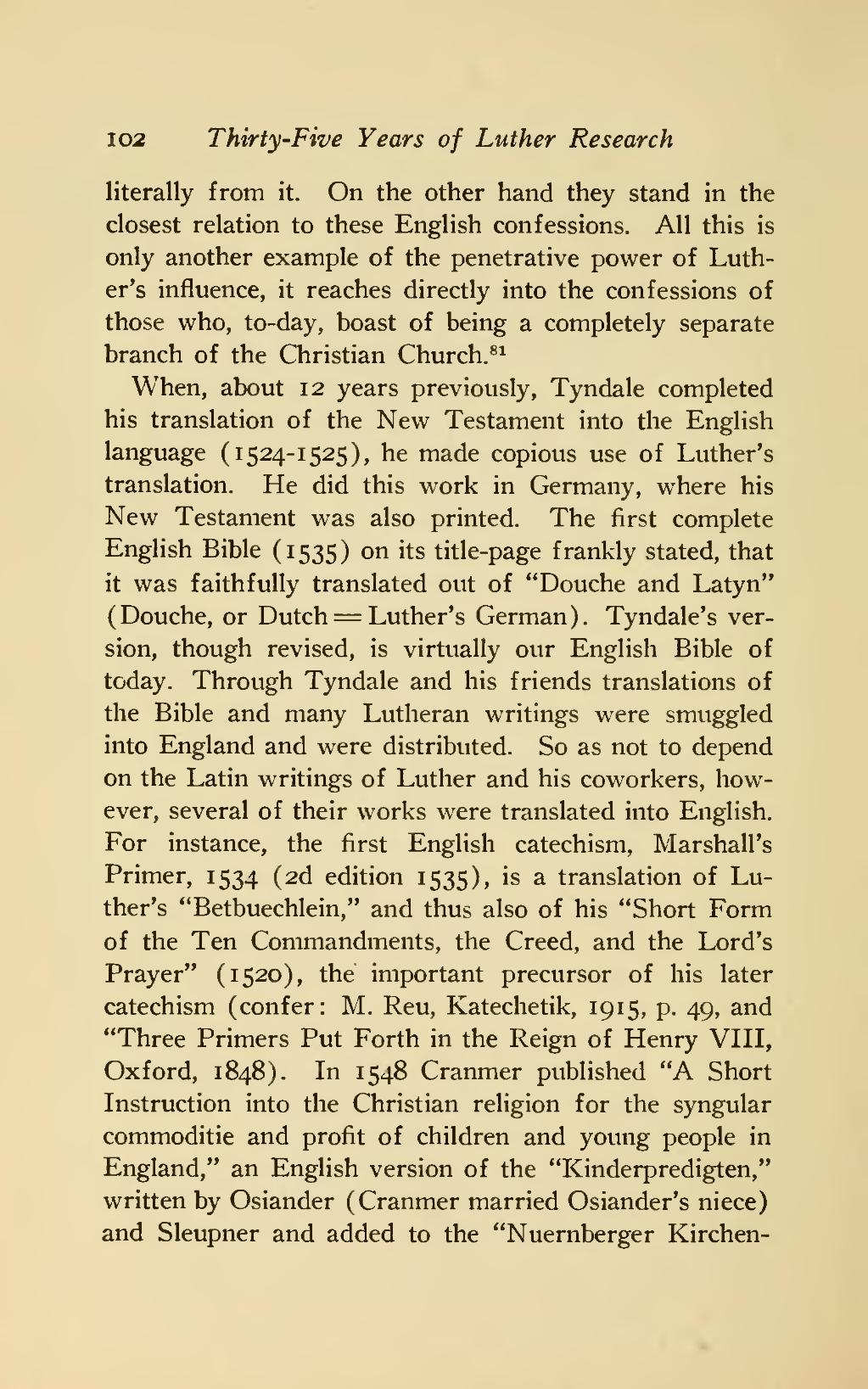literally from it. On the other hand they stand in the closest relation to these English confessions. All this is only another example of the penetrative power of Luther's influence, it reaches directly into the confessions of those who, to-day, boast of being a completely separate branch of the Christian Church.81
When, about 12 years previously, Tyndale completed his translation of the New Testament into the English language (1524-1525), he made copious use of Luther's translation. He did this work in Germany, where his New Testament was also printed. The first complete English Bible (1535) on its title-page frankly stated, that it was faithfully translated out of "Douche and Latyn" (Douche, or Dutch = Luther's German). Tyndale's version, though revised, is virtually our English Bible of today. Through Tyndale and his friends translations of the Bible and many Lutheran writings were smuggled into England and were distributed. So as not to depend on the Latin writings of Luther and his coworkers, however, several of their works were translated into English. For instance, the first English catechism, Marshall's Primer, 1534 (2d edition 1535), is a translation of Luther's "Betbuechlein," and thus also of his "Short Form of the Ten Commandments, the Creed, and the Lord's Prayer" (1520), the important precursor of his later catechism (confer: M. Reu, Katechetik, 1915, p. 49, and "Three Primers Put Forth in the Reign of Henry VIII, Oxford, 1848). In 1548 Cranmer published "A Short Instruction into the Christian religion for the syngular commoditie and profit of children and young people in England," an English version of the "Kinderpredigten," written by Osiander (Cranmer married Osiander's niece) and Sleupner and added to the "Nuernberger Kirchen-
